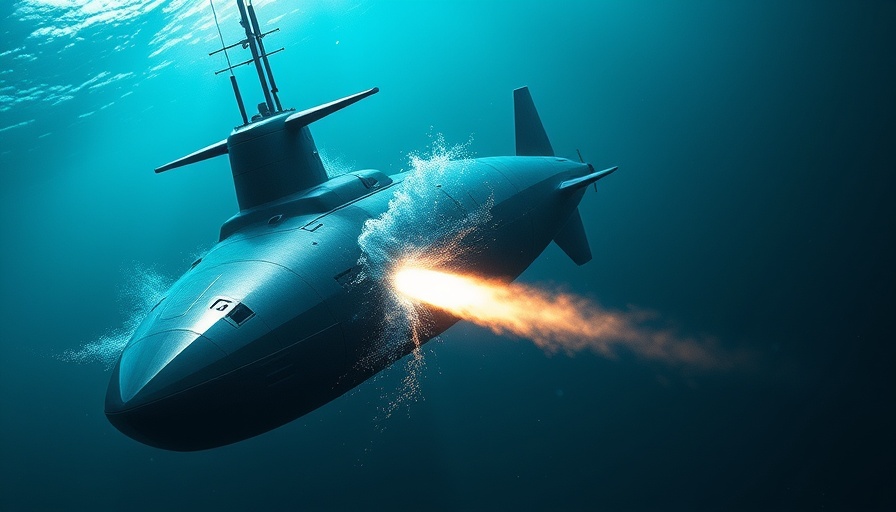
Breaking Ground: The Royal Navy's Ambitious UUV Trials
The Royal Navy has recently completed its second successful trial of Submarine-Launch Unmanned Underwater Vehicles (UUVs), marking a significant step forward in underwater warfare technology. The tests, held off the coast of Scotland, aimed to validate the launch-and-recovery capabilities of these advanced systems in real-world scenarios.
Understanding the Importance of UUVs in Modern Naval Warfare
Unmanned Underwater Vehicles are revolutionizing naval operations, offering a stealthy and versatile approach to underwater missions. Capable of carrying out reconnaissance, intelligence-gathering, and even strike capabilities, UUVs enable navies to extend their reach while minimizing risks to personnel. With this trial, the Royal Navy is not only enhancing its operational capabilities but also demonstrating a commitment to maintaining its edge in maritime defense technologies.
Historical Context and Background of UUV Development
UUV technology has undergone significant advancements since its inception. Initially developed for scientific exploration and reconnaissance, its applications in military contexts have expanded dramatically. Today, UUVs can be equipped with sophisticated sensors and payloads, allowing them to perform complex tasks autonomously. The Royal Navy's interest in UUVs aligns with global trends, as many modern navies increasingly integrate drone technologies into their fleets.
A Glimpse at the Technology Behind UUVs
The UUVs tested by the Royal Navy feature cutting-edge technology, including enhanced autonomy systems and advanced communication capabilities. This technology enables them to operate in challenging conditions without direct human control, tapping into artificial intelligence for mission execution. As these systems grow more sophisticated, their applications will expand, influencing future naval strategies and operational concepts.
Future Predictions: What Lies Ahead for Underwater Warfare?
The successful trials signify a pivotal moment for the Royal Navy's investment in underwater capabilities. As international maritime tensions continue to rise, the role of UUVs in deterrence and offensive operations is likely to expand. Analysts predict that future conflicts may heavily involve UUVs, changing engagement rules and operational tactics. Furthermore, UUVs could offer opportunities for cooperative missions among allied navies, enhancing collective security.
Challenges and Considerations for UUV Integration
Despite their promising capabilities, the integration of UUVs into existing naval operations is not without challenges. Issues such as cybersecurity, logistical support, and operational protocols must be addressed to ensure effective deployment. Ongoing training for personnel and investments in infrastructure will also be critical as the Royal Navy navigates these shifts.
Why this Matters to Local Communities and the Broader Public
The developments in UUV technology and naval capabilities don't just have military implications; they also affect local economies, particularly in areas relying on maritime industries. Communities engaged in shipbuilding, maritime research, and technology development stand to benefit from increased governmental funding and job creation associated with these advancements. Furthermore, as naval technologies advance, they often lead to innovations in other sectors, offering broader impacts on technology and engineering fields across the nation.
Your Role in Supporting Technological Advancements
Staying informed about developments in technology, specifically within your region, empowers you to understand their impacts on your community and beyond. Supporting educational programs that focus on STEM (science, technology, engineering, and mathematics) fields can foster a new generation ready to tackle future innovations, including advancements in naval technology like UUVs.
The Royal Navy's UUV trials illustrate the rapid evolution of warfare technology and its changing landscape. As these capabilities develop, we can all play a role in conversations surrounding defense, community engagement, and technological advancement, advocating for responsible and innovative paths forward.
 Add Row
Add Row  Add
Add 




Write A Comment